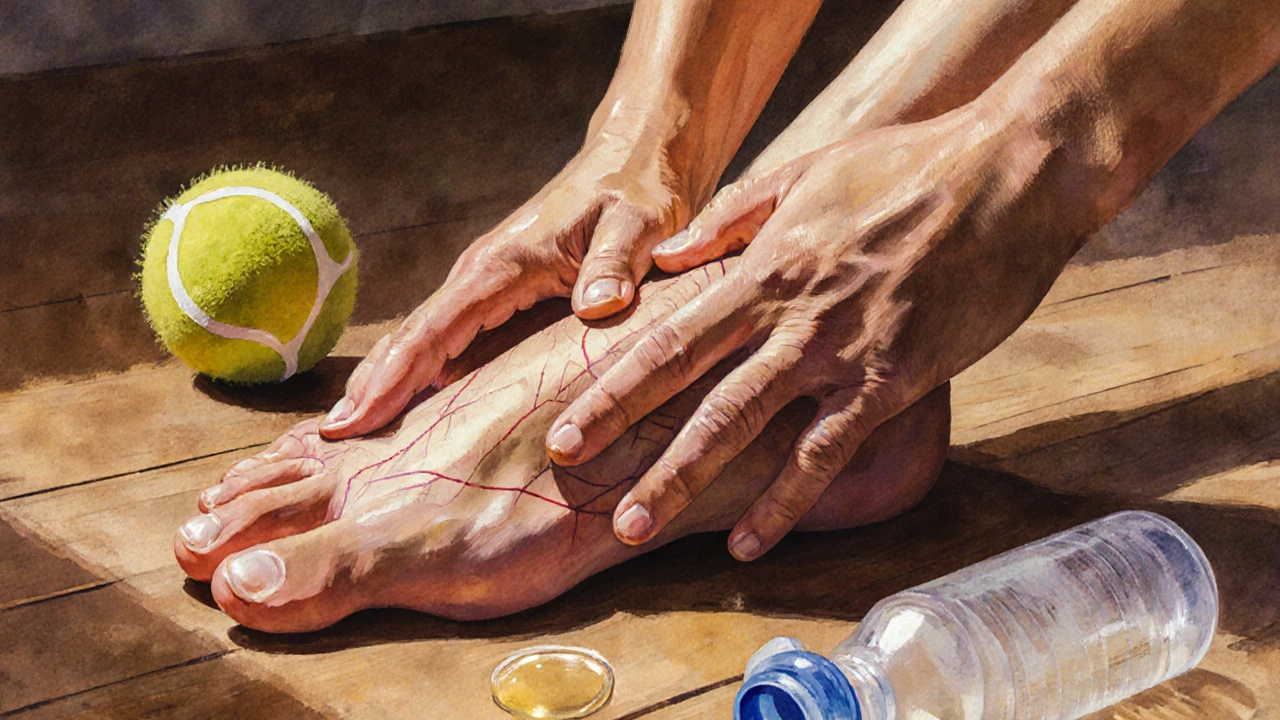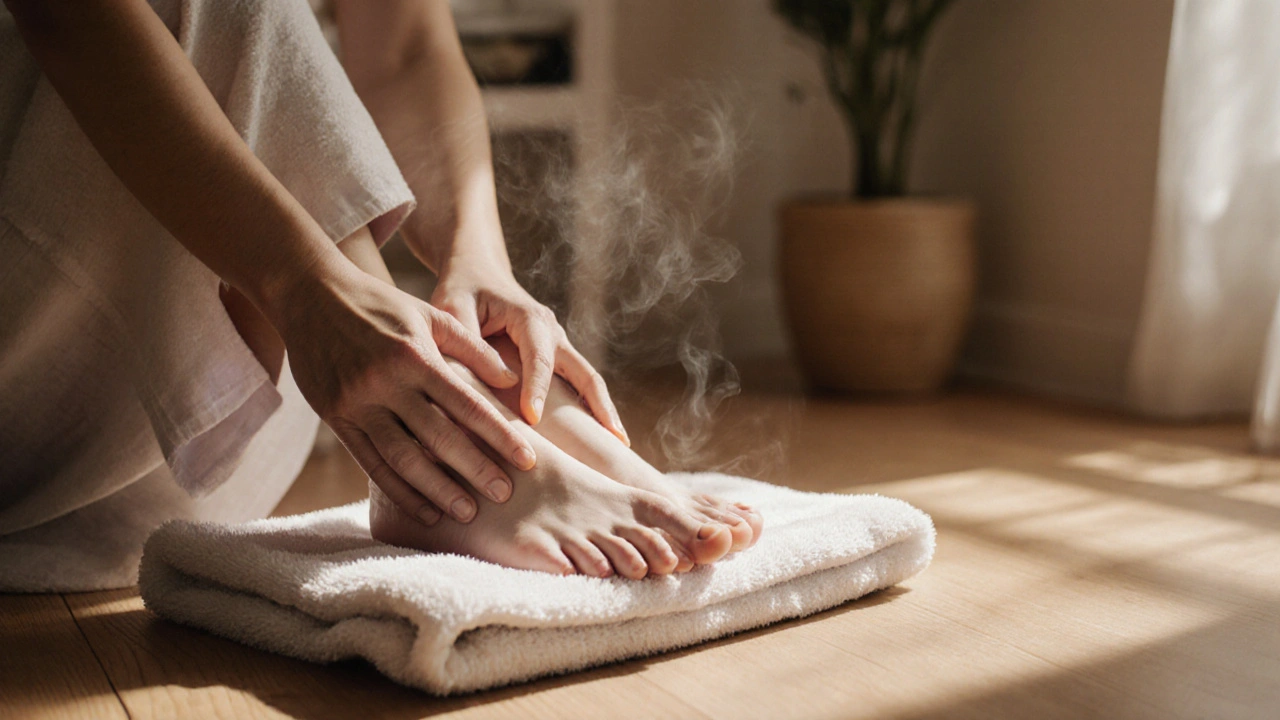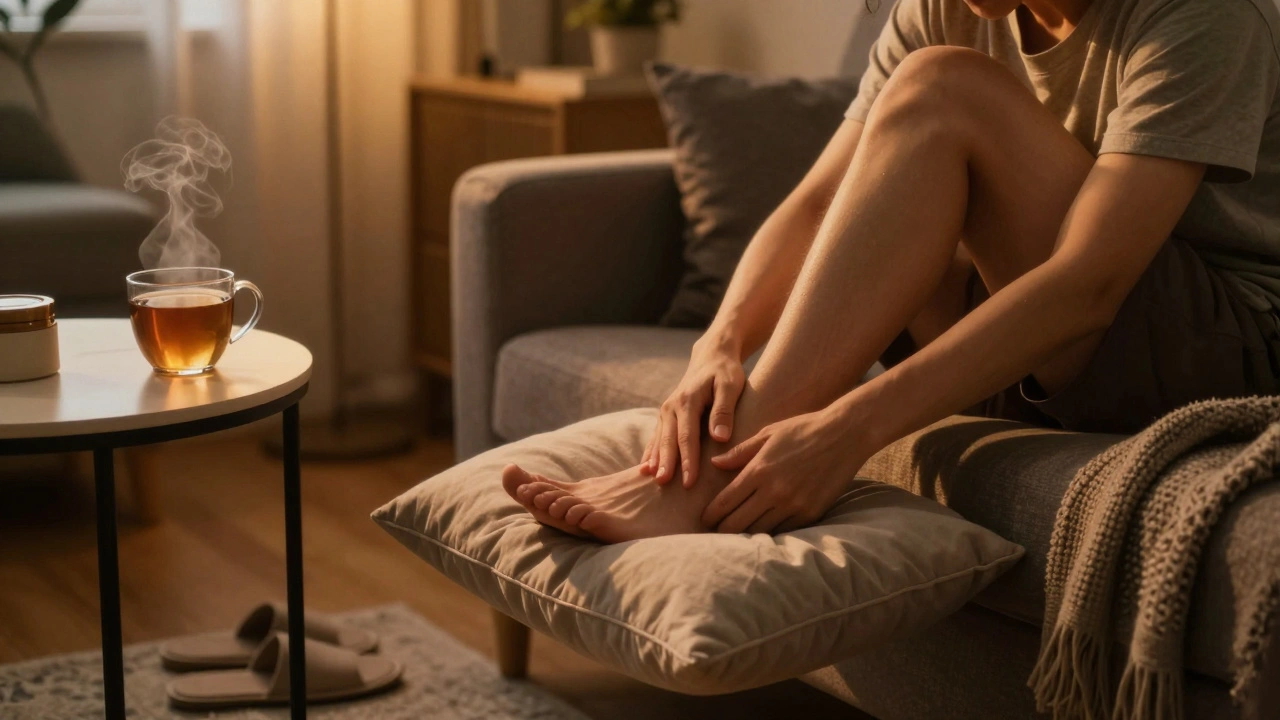Discover how foot massage reduces stress, relieves pain, and improves sleep. Learn the best types in London, pricing, safety tips, and why this simple therapy works wonders for your whole body.

- Created by: Liam Redgate
- Completed on: 7 Nov 2025
- Categories: Foot Massage
You’ve spent hours on your feet-standing at work, chasing kids, walking through airports, or just living life. By the end of the day, your feet feel like they’ve been through a war. Swollen, achy, heavy. And you don’t have time for a spa visit. But what if you could turn your living room into a relaxation zone with nothing but your hands, a little oil, and 15 minutes? Giving the perfect foot massage at home isn’t just possible-it’s one of the easiest, most effective ways to reset your whole body.
Why Foot Massage Works (And Why You Need It)
Your feet are your foundation. They carry your entire weight, absorb shock, and contain over 7,000 nerve endings. That’s more than your tongue or your fingertips. When those nerves are stimulated through massage, they send calming signals straight to your brain. It’s not magic-it’s neuroscience. A 2021 study in the Journal of Alternative and Complementary Medicine found that participants who received regular foot massages reported 40% less stress and improved sleep within two weeks. But you don’t need a study to know this. You’ve felt it. That deep sigh when someone rubs your arch after a long day. That warmth spreading up your calves. That’s your nervous system saying, “We’re safe now.”What You Need (Spoiler: Not Much)
You don’t need fancy tools, expensive oils, or a massage table. Here’s your bare-bones kit:- A quiet space-no TV, no phone buzz
- A comfortable chair or couch
- A small towel
- 1-2 tablespoons of oil: coconut, almond, or even olive oil work fine
- Optional: a tennis ball or frozen water bottle for extra pressure
The 5-Step Foot Massage Routine
Follow this sequence every time. It’s designed to release tension, improve circulation, and calm your nervous system. Do it on both feet, and take your time-don’t rush.- Warm Up the Feet - Start by gently rubbing both feet together with your palms. Don’t press hard yet. Just glide your hands over the tops and soles for 30 seconds. This warms the skin and gets the blood flowing.
- Thumb Circles on the Arch - Use your thumb to make slow, deep circles along the arch of the foot. Start near the ball and work toward the heel. Apply firm but comfortable pressure. This area holds a lot of stored tension from walking and standing. If you hit a tender spot, hold for 3-5 seconds. Don’t push through pain-just linger.
- Toe Stretch and Roll - Hold one toe between your thumb and index finger. Gently pull it away from the foot, then rotate it in small circles. Do this for each toe, front and back. Then roll each toe between your fingers like you’re rolling a tiny stress ball. This loosens tight tendons and improves flexibility.
- Heel and Sole Compression - Place both thumbs side by side on the heel. Press down slowly, then move forward toward the ball of the foot. Repeat 5-8 times. Now, use your knuckles to apply gentle pressure along the entire sole, moving from heel to toes. Think of it like kneading dough-firm, rhythmic, soothing.
- Ankle Rotations and Calf Squeeze - Hold the ankle with both hands. Gently rotate the foot clockwise, then counterclockwise, 5 times each. Then, use both hands to squeeze the calf muscle from ankle to knee, releasing slowly. This pulls tension up from the foot and into the larger muscle group.

When to Do It (And When to Avoid It)
The best time? Right after a long day. Or before bed. Or after a shower-warm skin absorbs oil better and feels more relaxed. But there are times to skip it:- If you have an open wound, infection, or recent fracture
- If you have severe diabetes with nerve damage (consult your doctor first)
- If your foot is swollen from a blood clot or deep vein thrombosis
Boost the Experience: Add These Simple Upgrades
Want to turn this into a full sensory escape? Here’s how:- Use warm oil - Heat the oil in a small bowl of warm water for a minute. Cold oil feels jarring. Warm oil feels like a hug.
- Add a drop of lavender oil - It’s calming, natural, and smells like a spa. Just one drop mixed into your base oil is enough.
- Play soft music - Ambient sounds, rain, or instrumental tunes help your brain switch off.
- Use a tennis ball - Roll it under your foot while sitting. It’s like a mini massage roller. Do this for 1 minute before or after your hands-on session.
- Try a frozen water bottle - If your feet are swollen or sore from standing all day, roll a frozen water bottle under your arch. The cold reduces inflammation, and the shape fits perfectly.
Foot Massage vs. Store-Bought Massagers
There are dozens of foot massagers on Amazon-some cost over $200. Do they work? Sometimes. But here’s the truth: none of them match the human touch.| Aspect | Hand Massage | Electric Massager |
|---|---|---|
| Pressure Control | You adjust in real time-firm where needed, gentle where sensitive | Fixed settings. Often too strong or too weak |
| Targeted Relief | You feel exactly where the tension is and focus there | General vibration. Misses key pressure points |
| Emotional Calm | Human touch releases oxytocin-the “bonding hormone” | No emotional connection. Just mechanical noise |
| Cost | Free (after buying oil) | $50-$300+ |
| Portability | Do it anywhere-on the couch, in bed, even at work | Needs power, space, setup |

Make It a Habit
One foot massage won’t fix chronic pain. But five a week? That changes everything. Start small: Do it once after work. Then twice. Soon, you’ll look forward to it. Your feet will thank you. Your shoulders will drop. Your sleep will deepen. Your mood will lift. Try this: Keep the oil bottle next to your favorite chair. Every time you sit down, spend 5 minutes on your feet. No goal. No rush. Just presence.Frequently Asked Questions
How long should a foot massage last?
A good foot massage takes 7-15 minutes per foot. Even 5 minutes helps if you’re short on time. The key is consistency-not duration. Doing it daily for 5 minutes beats doing it for 30 minutes once a week.
Can foot massage help with plantar fasciitis?
Yes. Many people with plantar fasciitis find relief by gently massaging the arch and heel. Focus on slow, deep thumb circles along the bottom of the foot. Avoid aggressive pressure directly on the painful spot. Combine with stretching and ice for best results. If pain persists, see a physical therapist.
What’s the best oil for foot massage?
Coconut oil is popular because it’s moisturizing, has a light scent, and absorbs well. Sweet almond oil is gentle and great for sensitive skin. Olive oil works in a pinch-it’s thicker but still effective. Avoid mineral oil or synthetic lotions-they don’t penetrate and can clog pores.
Can I give a foot massage to someone else?
Absolutely. It’s one of the most thoughtful gestures you can make. Ask them where they feel the most tension. Let them guide you. Some people like deep pressure; others prefer light touch. Communication matters more than technique.
Why do my feet feel tingly after a massage?
That tingling is a good sign. It means you’ve stimulated nerves and improved circulation. Blood is flowing where it was stuck. The sensation usually fades within a few minutes. If it turns into numbness or sharp pain, stop and rest.
Final Thought: Your Feet Deserve More Than a Shoe
You don’t need a spa to feel cared for. You don’t need to spend money to heal. Sometimes, the most powerful thing you can do is sit down, take off your shoes, and use your own hands to bring comfort to the part of you that carries you through every day. Your feet don’t ask for much. They just want to be seen. To be touched. To be loved. Give them that.Foot massage is a simple, science-backed way to reduce stress, relieve pain, and improve sleep. Learn how to do it at home, what to expect in London, and why it’s more powerful than you think.
Learn how to give a soothing, effective foot massage at home with simple techniques, oils, and tools you already have. Relieve pain, reduce stress, and improve sleep with this easy daily ritual.



Clay Hamilton
November 9, 2025 AT 12:20Paul Eric
November 10, 2025 AT 19:19donna maukonen
November 10, 2025 AT 21:54Kristine Daub
November 12, 2025 AT 14:49Ranjan Shetty
November 12, 2025 AT 21:21Kristen Sardis Barry
November 14, 2025 AT 07:27Kristi Bangs
November 15, 2025 AT 19:10